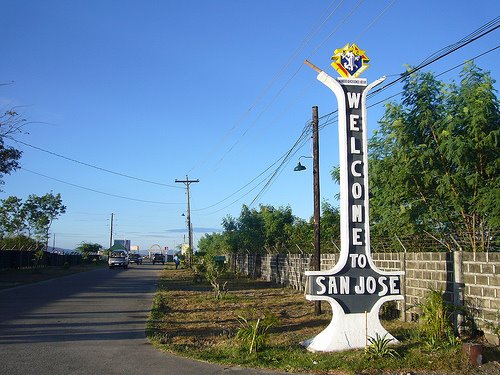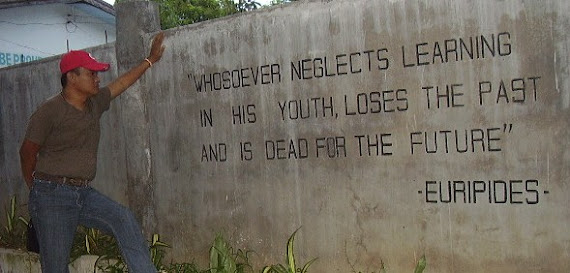It was truly depressing that Kali died on the very day when the whole country is celebrating Tamaraw Month, a celebration that centers on the protection and conservation of this critically endangered wild buffalo. This coming Sunday, October 10, 2021, we will be commemorating the first death anniversary of the last captive-bred Philippine tamaraw (Bubalus Mindorensis) known as Kalibasib or Kali. Kalibasib is short for “Kalikasang Bagong Sibol” (nature newly sprung).
The whole community of environmental activists and conservation advocates mourned the death of the animal considered as the ambassador for conservation who lived his entire 21 years in captivity at the Tamaraw Gene Pool Farm in Barangay Manoot, Rizal, Occidental Mindoro. Another tragic thing is, Kali passed away in the time of COVID-19 when movements of some groups and individuals who want to visit and see him for the last time are restricted.
Death Within a Celebration
The Tamaraw Month is declared under Presidential Proclamation No. 273, series of 2002, where the month of October of every year is declared as Special Month for the Conservation and Protection of the Tamaraw in Mindoro.
According to the Tamaraw Conservation Program or TCP, Kali was born on June 24, 1999, to his mother Mimi. The wildlife veterinarian who performed the necropsy on Kalibasib said the iconic land mammal had a cardiac failure that led to his death. Mimi, together with the rest of the twenty adult tamaraws who were taken care of under the TCP in 1980 came from its natural habitats in Mounts Aruyan, Malati- Siburan, all within the territorial jurisdiction of Municipality of Sablayan.
Equally distressing is the truth that Kali never seen his expected environment and he died away from home, just as though. But in this situation exists a good side, not to Kalib’s species but us humans. His captivity provided a chance for us human beings to see a tamaraw in bones and flesh. His life allowed us to have closer look at his kind for whatever ends. Kali opens us the rare opportunity of having a close encounter with his kind.
Name Game
People from all over, journalists, environmentalists, students, professors, tourists, athletes, and scientists, name it, knows Kalibasib and were able to write many stories, researches, and studies about him or shared moments with him. Kalibasib was well known and could be Googled, while the girl who christened him as such is virtually unknown to everybody. The name Kalibasib was actually given by Nova Embanecido Zubiri, a resident of Bagong Sikat here in San Jose. Zubiri won a contest and brought home some cash and a plaque from DENR.
The competition was covered in a radio program called "Todo Pasada" aired over DZVT hosted by veteran local broadcaster Ferdie Data in 1999 when Zubiri was still in high school. It was sponsored by the DENR joined by hundreds of participants from all over Occidental Mindoro.
Taxidermy
Occidental Mindoro Gov. Eduardo B. Gadiano sent an appeal to the National Museum of Natural History to perform taxidermy to preserve the remains of Kalibasib to keep the memory of the world’s most well-known tamaraw but it did not materialize for one reason or another. Instead, Gadiano commissioned a private taxidermist from Quezon City. It is expected that the preserved skull and hide or head of Kali will arrive tentatively on October 15, just in time for the celebration of the Tamaraw Month this year, said Neil Anthony Del Mundo, DENR’s Tamaraw Conservation Program coordinator. Kali's preserved head will be brought to different towns for public viewing as part of the celebration but basically still under the custody of TCP.
Also last year, Vice-Mayor Walter "Bong" Marquez of Sablayan authored a resolution supporting the preservation of Kali’s remains and further requested to be housed at Sablayan Municipal Museum, the only operational museum in Occidental Mindoro. San Jose town is also preparing its exhibition hall exclusively for Kalibasib. The DENR-TCP is likewise planning to put up a museum when they already establish its research center.
The process of taxidermy, the art of preparing, stuffing, and mounting the skins of animals with a lifelike effect, usually needs a year to finish. The bones of Kali will also be recovered soon and placed in a museum. The DNA mapping and other genomic procedures are now being started, according to Del Mundo.
Kali Lives
There must no “Babang Luksa” (the first death anniversary which is the end of mourning in Filipino funeral tradition) in our hearts in our struggle for the environment and the tamaraws of Mindoro. The communication, education, and public awareness (CEPA) campaign must be sustained towards their protection and conservation to keep alive the memory of Kalibasib, its foremost advocate and “poster boy” ever lived. Zubiri, who has now a family, is greatly saddened by the death of the famous animal she named.
The need to integrate the cultural and development needs of the Mangyans and address the non-sustainable use of natural resources in the area. Human activities such as poaching and habitat destruction must be stopped. Without it, Kali died in vain.
With regards to CEPA, the TCP already blasted off its “Dalaw Turo” activities in the whole island of Mindoro especially those communities near the mammals’ habitat. With NGO partners, stakeholders, other government offices, the TCP does intense public awareness campaigns especially during the celebration of Tamaraw Month.
On Kali’s first death anniversary, Del Mundo fittingly puts it, “Kali will always remain an icon. Even in death, he is still the beacon of hope for his species.”
So, live on, Kali.
-------
Reference: https://businessmirror.com.ph/2020/10/25/kalibasib-a-symbol-of-hope-inspiration/







Salamat Kali, salamat Kuya Norman.
ReplyDelete